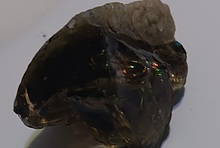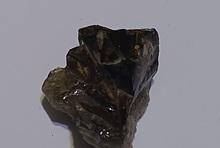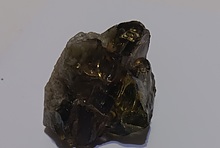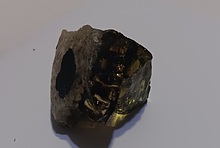Home PageAbout MindatThe Mindat ManualHistory of MindatCopyright StatusWho We AreContact UsAdvertise on Mindat
Donate to MindatCorporate SponsorshipSponsor a PageSponsored PagesMindat AdvertisersAdvertise on Mindat
Learning CenterWhat is a mineral?The most common minerals on earthInformation for EducatorsMindat ArticlesThe ElementsThe Rock H. Currier Digital LibraryGeologic Time
Minerals by PropertiesMinerals by ChemistryAdvanced Locality SearchRandom MineralRandom LocalitySearch by minIDLocalities Near MeSearch ArticlesSearch GlossaryMore Search Options
The Mindat ManualAdd a New PhotoRate PhotosLocality Edit ReportCoordinate Completion ReportAdd Glossary Item
Mining CompaniesStatisticsUsersMineral MuseumsClubs & OrganizationsMineral Shows & EventsThe Mindat DirectoryDevice SettingsThe Mineral Quiz
Photo SearchPhoto GalleriesSearch by ColorNew Photos TodayNew Photos YesterdayMembers' Photo GalleriesPast Photo of the Day GalleryPhotography
╳Discussions
💬 Home🔎 Search📅 LatestGroups
EducationOpen discussion area.Fakes & FraudsOpen discussion area.Field CollectingOpen discussion area.FossilsOpen discussion area.Gems and GemologyOpen discussion area.GeneralOpen discussion area.How to ContributeOpen discussion area.Identity HelpOpen discussion area.Improving Mindat.orgOpen discussion area.LocalitiesOpen discussion area.Lost and Stolen SpecimensOpen discussion area.MarketplaceOpen discussion area.MeteoritesOpen discussion area.Mindat ProductsOpen discussion area.Mineral ExchangesOpen discussion area.Mineral PhotographyOpen discussion area.Mineral ShowsOpen discussion area.Mineralogical ClassificationOpen discussion area.Mineralogy CourseOpen discussion area.MineralsOpen discussion area.Minerals and MuseumsOpen discussion area.PhotosOpen discussion area.Techniques for CollectorsOpen discussion area.The Rock H. Currier Digital LibraryOpen discussion area.UV MineralsOpen discussion area.Recent Images in Discussions
Techniques for CollectorsRemoving Blu-tack

3rd May 2006 15:20 UTCMark W
It would be better if the solvent was commercially avaialable and non toxic.
Have tried isopropanol to no great affect.
Any hints/helps greatly received!

3rd May 2006 15:58 UTCBarry Flannery Expert
Have you tried using another piece of blue tack and rubbing them together? They usually stick and come off that way but I'm not sure about older blue-tack.
Barry

3rd May 2006 16:15 UTCMark W

3rd May 2006 16:32 UTCFelix Garcia Garcia Expert
I got some months ago a nice epidote crystal from Prince of Wales, Alaska, with some old blue-tack attached. After trying as Barry suggest without any success, I tried with some commercial acetone and after a few hours, the epidote was clean with no traces of blue-tack.
I have also tried with Red Cloud wulfenites (this time the blue-tack had hardened with time). The acetone softened it and I was able to take it out without risking the fragil wulfenites.
I just hope it will work with your specimens as well.
Felix Garcia
3rd Jun 2006 22:35 UTCMaurice de Graaf Expert
Needless to say you should not emerge porous specimen in lamp oil, but I had good results on quartz and cassiterite specimen.
Emerge the sample in lamp oil and let it soak for about 15 minutes. Then you should be able to brush off the tack with a soft painters brush while keeping the sample emerged. Then wash the sample thouroughly with dishwashing detergent to get rid of the fat.
This is truly a last resort after the 'rub it of with more blue tack'method failed.
Maurice
5th Jun 2006 12:29 UTCKeith Compton 🌟 Manager
Cheers

15th Jun 2006 07:31 UTCAndrew G. Christy Manager
1. Removable (:-)) tack is a MUCH better way of temporarily affixing specimens than glue. I get very irritated by micro/thumb specimens of 'mineral A' that have been glued in such a way that the tiny pocket of rarer, uglier 'mineral B' has been left not only out of sight but drenched in glue. If they had been tacked instead, there would have been some hope of retrieving B, in many cases.
2. Real Blu-Tack (nearly neutral pale blue-grey colour) is MUCH better than strongly coloured tacks. It is also much better than plasticine, window putty or various dark grey tacks that I have encountered. These have a very high oil content, and the oil tends to leak into the specimen, giving it a permanent wet look which is almost impossible to remove. Blu-Tack does this to a much smaller extent.
3. Rolling and dabbing with another piece of not-too-old-and-dry, not-too-warmed-up Blu Tack is the best way of removing 95% of the tack on your specimen. This is also a great way to remove crumbs and fluff from specimens, to keep them photogenic.
4. To get rid of the final scraps, I use a modification of Maurice's method. I use a drop or two of light bike/sewing machine oil, and mix it into the tack with a soft toothbrush to produce a thin, oily sludge. Then I add a dribble of washing-up liquid and mix that in. The resulting mixture emulsifies with water and can be washed off.
Of course, wherever possible, try to avoid using tack on fibrous, hackly, porous or cavernous surfaces, since you will never be able to extract all of it.

31st Jan 2007 07:26 UTCMarcos
Thanks,
Marcos

1st Feb 2007 05:26 UTCAnonymous User
I use tack for several years(I paint historical miniatures and tack is one of the key materials.)I use Yellow tack but the philosophy is the same with every tack.
If you want to remove tack use a "ball" of bigger amount of tack and rub it with the piece of tack you want to remove.Tack has higher affinity with tack than anything else!
I always use tack to set my minerals on bases,instead of glues(silicon,Cyanoacrylic,epoxy putties etc.).Tack is REMOVABLE mechanically WITHOUT the use of hard tools(knives,needles etc.),which can fatally damage even hard specimens(breaking),not talking about softer ones that can be scratched!
To remove Tack,Epoxy Putty,Cyanoacrylic glue(super glue) etc.,one should use pure Acetone.Cyanoacrylic is dissolved in a few minute,Tack and Epoxy need much more time(days)-for Epoxy you should need to work mechanically as well!Here I'm talking about degenerated Tack(when you have used other kind of solution to remove it!)-NO NEED to remove tack in normal condition with solutions!BE CAREFULL!Pure aceton will dissolve the glue,but maybe your specimen as well!
And,since we've opened a new topic-how do we present our specimens on bases:
This is my opinion:I always try my specimens to be stably set on a base,so that a vibration does not remove them and cause them to fall and damage!
BUT!I do not glue them or use any material that could hurt the specimen.I prefer to use hard paper boxes,which are "dressed" with foam(soft sponge like material) and just put the specimen inside.The specimen is free to move in the borders of the box,then I put the box insinde the bookcase and stabiliase it with tack on the bottom.Result:The box doesn't move,only the specimen can move,but only inside the opened box walls,that are dressed with foam and doesn't get damaged!If I want even more stable specimen,I sew the specimen with a little thread on the foam(the foam is well glued on the inside of the box!).
This way,my specimens are visible and safeand I can move them when ever I want,just closing the box,and rotate it to leave the tack.Then I remove the tack with some ball of tack and take them to a show(maybe).This way the specimen is always(cross your fingers on that :))just in the condition it came to me!
In case you wonder,I don't buy the boxes,I make them myself,cutting hard paper and gluing the foam inside.
I hope I helped and I would love to hear other tips on presenting safely our specimens!
Cheerz!
_Kostas.

4th Feb 2007 17:25 UTCWes Gannaway

6th Feb 2007 13:05 UTCJens Schadebrodt
Jens

27th Jun 2007 08:33 UTCMarika
Thank you
Marika

16th Jul 2007 01:08 UTCJohn Passaneau
John Passaneau

21st Oct 2011 13:48 UTCHarry Shaw
21st Oct 2011 14:21 UTCReiner Mielke Expert
21st Oct 2011 16:06 UTCPeter Haas
The customs don't really like strange parcels that are filled with a white powder. If you live in a country where people tend to take drastic safety measures before asking, then good luck and have fun ! Well, sugar is be easy to identify, but It certainly won't be that at which they will be thinking in the first place ...

21st Oct 2011 16:08 UTCD Mike Reinke
Reiner, I really like your suggestion, I'll try it, but I hope you don't have ants! They will find sugar, for sure.
Wes, I use those small squares of tile too, @ $6 for 50 at hobbie Lobbie, (and yesterday, 30% off, cha-ching.)
Marika, On flat surfaces if I can wet them a little, I use a stiff razor blade, it gets right down to the bone. Slip under the item at a very slight angle, sometimes it does surprisingly well.

21st Oct 2011 17:22 UTCRudy Bolona Expert
21st Oct 2011 18:41 UTCReiner Mielke Expert
The icing sugar is not in the form of white powder, it is applied as a semi-liquid and then let to dry to a hard crust. You can do it in stages for really fine needles first apply as a thinner liquid then after that dries thicker etc. It is like embedding the crystals in a matrix of sugar. For the powder method I use laundry detergent powder but that is too harsh for some things.

20th Dec 2014 13:28 UTCSimon Baxter
20th Dec 2014 18:41 UTCLuca Baralis Expert
-------------------------------------------------------
>
> ... I prefer to
> use hard paper boxes,which are "dressed" with
> foam(soft sponge like material) and just put the
> specimen inside.
> ...
> This way, my specimens are visible and
> safeand I can move them when ever I want, ...
Interesting, but not sure about how it show. Can you post a picture?
By the way, hot glue is very very easy to remove with a drop of alcool. No residuals, very little risk of any damages.

20th Dec 2014 20:25 UTCEd Clopton 🌟 Expert
22nd Dec 2014 03:46 UTCRock Currier Expert
I don't think there is any particular definition of what is or what is not mineral tack or blue tack. Some call these earthquake tac. Ultimately what will prove useful to you depends on what you want it for and the degree of "tackeyness" you need. Some of these can be really sticky and difficult to remove from a specimen. You will just have to experiment and see what works best for you.

23rd Dec 2014 19:27 UTCColorado John

23rd Dec 2014 23:32 UTCEd Clopton 🌟 Expert

7th Jan 2015 05:33 UTCOrange Peels
I've been fiddling around w/ ways of extracting the oil, from zesting the orange to rolling the rinds thru those old double roller moisture extractors at DIY car washes... I've managed to fill a few 2 ounce gold containers w/ remarkably pungent and thick 'orange extract'... But have yet to find the best method. I simply dilute about 10 drops... Indeed, a little goes a long way. Best method I've found for removing tac.
7th Jan 2015 10:52 UTCPaul De Bondt Manager
Thank you for the tip.
I used to make paint diluter from it. Not the raw peel juice of course but a distillate.
Mixed with lineseed oil, natural pigments and siccatifs, it gives you a paint that smells like orange juice and is a real joy to paint with instead than the stincky White Spirit based paint. And ecological too.
Livos company is still making paints with it and the diluting agant can be bought in eco shops. http://www.livos.co.uk/
Will try it on tack.
Take care and best regards.
Paul.
7th Jan 2015 12:13 UTCPaul Brandes 🌟 Manager
Also, this appears to be a thinly disguised attempt at advertising for navel oranges! :-S

7th Jan 2015 13:24 UTCBob Harman
BTW, my wife uses it quite often and swears by it. CHEERS…….BOB

7th Jan 2015 14:52 UTCNelse Miller

7th Jan 2015 15:23 UTCNik Nikiforou
Nik
7th Jan 2015 20:38 UTCPaul Brandes 🌟 Manager

8th Jan 2015 00:59 UTCBob Harman
8th Jan 2015 03:36 UTCPaul Brandes 🌟 Manager
Sometimes you have to not take yourself too seriously, especially on here! :-D

3rd Sep 2015 10:06 UTCGill Marshall
12th Sep 2015 14:56 UTCReiner Mielke Expert

2nd Dec 2015 01:33 UTCTerrie

22nd Dec 2022 03:22 UTCElla Henderson
22nd Dec 2022 11:47 UTCGary Morse
22nd Dec 2022 17:10 UTCSteve Hardinger 🌟 Expert
23rd Dec 2022 02:12 UTCKeith Compton 🌟 Manager
You also don't mention what your statute is made of - just a rock statute.




Mindat.org is an outreach project of the Hudson Institute of Mineralogy, a 501(c)(3) not-for-profit organization.
Copyright © mindat.org and the Hudson Institute of Mineralogy 1993-2024, except where stated. Most political location boundaries are © OpenStreetMap contributors. Mindat.org relies on the contributions of thousands of members and supporters. Founded in 2000 by Jolyon Ralph.
Privacy Policy - Terms & Conditions - Contact Us / DMCA issues - Report a bug/vulnerability Current server date and time: April 19, 2024 13:01:38
Copyright © mindat.org and the Hudson Institute of Mineralogy 1993-2024, except where stated. Most political location boundaries are © OpenStreetMap contributors. Mindat.org relies on the contributions of thousands of members and supporters. Founded in 2000 by Jolyon Ralph.
Privacy Policy - Terms & Conditions - Contact Us / DMCA issues - Report a bug/vulnerability Current server date and time: April 19, 2024 13:01:38











